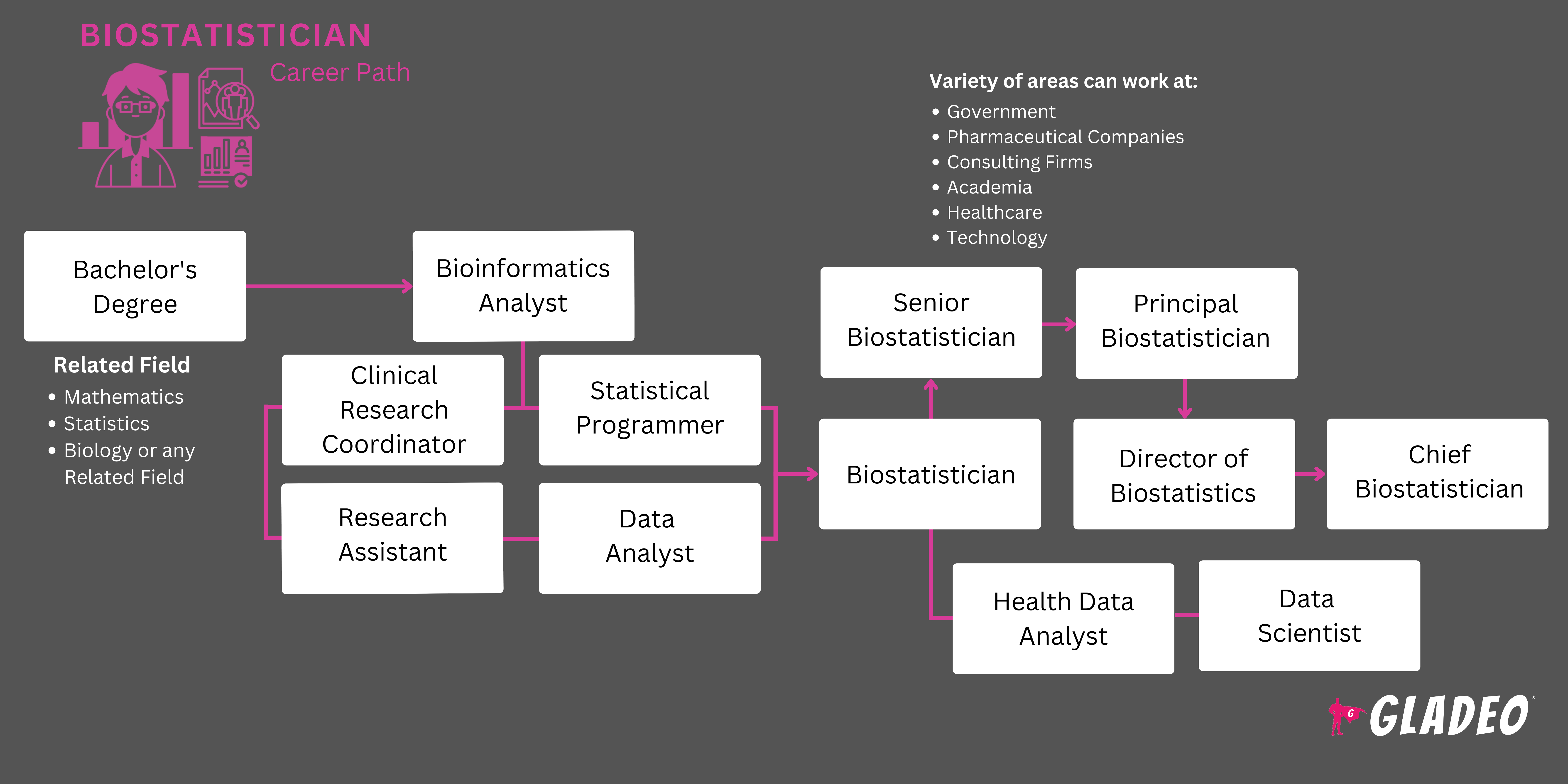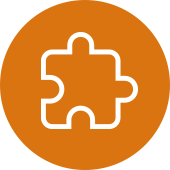Focos de atención
Biometrista, Consultor bioestadístico, Bioestadístico, Científico investigador, Científico estadístico
The only constant in life is change. One of the best ways to track changes is by taking measurements over time and comparing them. For example, if you measured your height five years ago and compared it to your height today, you might notice a difference!
The same concept is applied in many situations, including the healthcare sector. It’s also applied at large scales, such as studying healthcare changes within a group, city, country, or even the world.
But tracking changes on a mass scale is complicated, which is why we need trained experts to do it! That’s where Biostatisticians come in, capturing large quantities of biological data, and then using statistical models to look for changes (such as the mutations and spread of infectious diseases).
Working with medical researchers, epidemiologists, and health policymakers, Biostatisticians use their findings to help predict health trends, inform public health strategies, determine the efficacy of drug treatments, and improve patient care and outcomes!
- Contributing to healthcare policy development
- Working with researchers on studies that improve medical practices
- Using statistical analysis to uncover trends and solve health-related problems
Horario de trabajo
- Biostatisticians work full-time with regular office hours. Overtime may be needed when there’s a tight deadline to meet. Workplace settings may include research institutions, government agencies, or healthcare companies.
Tareas típicas
- Collaborate with healthcare/life sciences experts to design studies and surveys
- Consult on study design, data management, and results interpretation, as needed
- Establish timelines and objectives for biological research study projects
- Review research protocols and recommend statistical analyses
- Determine the appropriate sample size for clinical studies
- Write research protocols and analysis plans
- Assign tasks to assistants or programmers
- Collect biological data through surveys, experiments, archival data, health records, or other sources. Input data into secure databases
- Use data analysis algorithms and statistical approaches to analyze and interpret data
- Use mathematical models to track changes in biological phenomena
- Monitor clinical trials to ensure data quality and procedural adherence
- Conclude and make predictions from data summaries and analyses
- Apply research results to extend biological theory or suggest new projects
- Prepare statistical data, tables, and graphs for reports to regulatory agencies and other stakeholders
- Prepare articles for publication and presentations at conferences
Responsabilidades adicionales
- Write research proposals and grant applications
- Participate in peer review for scientific journals
- Engage in multidisciplinary research teams and contribute to public health studies
- Stay current with developments through literature, professional interactions, and continuing education
- Teach biostatistics courses or seminars
Habilidades blandas
- Analítica
- Pensamiento crítico
- Curiosidad
- Toma de decisiones
- Orientado al detalle
- Lógica
- Objetivo
- Observador
- Persistente
- Resolución de problemas
- Ingenioso
- Gran capacidad de comunicación
- Trabajo en equipo
Habilidades técnicas
- Ability to interpret and present biological data findings. Biological data types include:
- Sequences (DNA and genomes of various species)
- Graphs (pathway data, genetic maps, structured taxonomies)
- High-dimensional data (gene expression experiments)
- Geometric information (molecular structure data)
- Scalar and vector fields (chemical concentration, electric charge, current fluxes)
- Patterns (genes, regulatory sequences, protein structures)
- Constraints (conservation of mass, energy conservation)
- Images (electron and optical microscopy, radiographic images)
- Spatial information (spatial relationships and differences)
- Models (computational models describing form and parameters)
- Prose (biological literature and annotations)
- Declarative knowledge (hypotheses and evidence)
- Advanced statistical methodologies and modeling techniques
- Bioinformatics and genomic data analysis
- Sistemas de gestión de bases de datos
- Data collection methods, data analysis techniques, data manipulation and visualization tools
- Machine learning algorithms
- Programming languages (Python, Julia)
- Regulatory requirements and guidelines for clinical trials
- Statistical software (e.g., SAS, SPSS)
- Statistics and math applications in biology and health sciences
- Study design
- Descriptive studies (case reports, case series)
- Analytical studies (observational studies, experimental studies)
- Survival analysis, longitudinal data analysis, and multivariate analysis
- Government health departments
- Hospitals and healthcare systems
- Non-governmental public health organizations
- Pharmaceutical and biotechnology companies
- Universidades e instituciones de investigación
Expectations run high because biostatistics demands meticulous analysis and accurate conveyance of complex research findings—with a lot potentially riding on the results! Even though Biostatisticians might not have direct interaction with patients, their work significantly influences the development of health policies and the improvement of patient outcomes.
Biostatisticians spend a lot of time on their computers, analyzing data and compiling exhaustive reports. Some people may find such tasks tedious, but it’s important to stay focused and maintain a high level of attention to detail. The job also requires a commitment to continuous learning as advanced new statistical tools and methodologies come out.
The biostatistics field is being transformed by breakthroughs in big data analytics, machine learning, and artificial intelligence. These advancements are boosting the capacity to process and interpret vast amounts of data, enabling faster, more accurate conclusions.
The use of extensive datasets is also powering personalized medicine—customized medical treatments based on each patient’s genetic makeup and health profiles.
Online platforms are providing Biostatisticians with an unprecedented wealth of health-related data, which they can use for research (such as gathering population health insights for epidemiological studies). This, in turn, is enhancing the healthcare sector’s understanding and management of health trends and emergencies on a global scale.
Individuals drawn to this career field often have a strong interest in STEM subjects, especially in applying mathematical concepts to solve real-world problems. They may have enjoyed working with computers, engaging in detailed analysis, or participating in science fairs and math clubs.
- Some entry-level roles may only require a bachelor’s degree. Common majors include math, statistics, biology, computer science, and public health
- Most Biostatisticians need at least a master’s degree in biostatistics, statistics, or epidemiology
- Some high-level positions in research, academia, or leadership roles require a Ph.D.
- Per O*Net, 13% of Biostatisticians have a bachelor’s, 58% a master's, and 29% a doctoral degree
- Relevant courses will include:
- Computer programming and data management
- Data analysis and interpretation
- Mathematical modeling
- Probability and statistical theory
- Statistical software
- Study design and experimental methods
- Certifications can enhance job prospects and credibility. A few options include:
- American Health Information Management Association - Certified Health Data Analyst
- American Statistical Association - Accredited Professional Statistician
- Coursera - R Programming Certification
- Microsoft - Microsoft Certified: Data Analyst Associate
- SAS - Certified Statistical Business Analyst
- SAS Institute - Base Programming
- Society for Clinical Data Management - Certified Clinical Data Manager
- The Society of Actuaries - Certified Specialist in Predictive Analytics
- Continuous education via workshops, seminars, and conferences is essential to stay current with statistical methodologies and health research developments
- Prospective Biostatisticians should seek universities with strong undergraduate programs in math, statistics, biology, computer science, or public health
- Check if the program is accredited by the Council on Education for Public Health
- Search online for master’s programs in biostatistics, statistics, or epidemiology. Look for programs offering:
- Hands-on experience with statistical software and datasets
- Opportunities for research, internships, and collaboration with healthcare professionals
- Faculty involved in cutting-edge research in biostatistics and public health
- A curriculum that balances theoretical knowledge with practical application in biological and medical sciences
- Considera el coste de la matrícula, los descuentos y las oportunidades de becas locales (además de la ayuda federal a través de la FAFSA).
- Consult with your high school advisor about advanced placement classes to better prepare for college
- Strive for high grades to maintain a competitive GPA for college applications
- Decide on an undergraduate major that lays a solid foundation for your biostatistics graduate degree
- Participate in student clubs to broaden your academic and extracurricular experience
- Gain practical experience through internships or research assistant positions
- Develop proficiency in statistical software and programming languages commonly used in the field
- Attend statistical or public health conferences to network with professionals
- Pursue certification in statistical software or methodologies
- Craft a compelling resume that highlights your education and experiences
- Apply for part-time jobs in government agencies, healthcare organizations, pharmaceutical companies, and colleges or research institutions to get your foot in the door
- Decide quiénes quieres que sean tus referencias personales y obtén su permiso para facilitar su información de contacto a los responsables de contratación.

- There’s currently a shortage of qualified Biostatisticians, which should boost your odds of finding work!
- Gain as much practical experience as possible with statistical software
- Showcase your research projects and skills on platforms like GitHub or an online portfolio
- Use your school’s career center to prepare for the job application process
- Network with professionals in the field to learn about job openings and get referrals
- Busca ofertas de empleo en portales como Indeed y Glassdoor
- Check out examples of Biostatistician resumes for ideas
- Tailor your resume to highlight relevant experiences and skills, and include relevant keywords such as:
- Bayesian Statistics
- Clinical Trial Design
- Data Management
- Data Visualization
- Epidemiological Research
- Aprendizaje automático
- Multivariate Analysis
- Regulatory Compliance (e.g., FDA)
- SAS/R Programming
- Statistical Analysis
- Prepare for interviews by reading through the employer’s website and learning about their work, values, and mission
- Also before interviews, brush up on your terminology and statistical theories and methods, such as regression analysis and Bayesian statistics
- Review common Biostatistician interview questions such as “How would you ensure the accuracy and validity of your data and interpretations?” Ask a friend to help you run through some mock interviews so you can practice your responses
- Regularly read industry journals and blogs to keep up with advancements
- Join professional groups like the American Statistical Association and attend events
- Seek internships to gain practical experience and insights into the biostatistics field
- Maintain an up-to-date LinkedIn profile and use it to expand your network
- Speak with your supervisor about opportunities to advance. Ask for their advice and let them know you’re willing to continue your education and training, if needed
- If you started with a bachelor’s, knock out your master’s next. If you started with a master’s, consider pursuing a Ph.D. to qualify for higher-level positions and research opportunities
- Get published! Having research in peer-reviewed publications like the Journal of the American Statistical Association, Statistical Methods in Medical Research, or Statistical Science helps establish your reputation as an expert in the field
- Seek leadership opportunities in projects and within professional organizations such as the International Biometric Society
- Stay abreast of advancements in statistical methods, software, and health research
- Consider specializing in a niche area, such as genetic biostatistics or environmental health, to differentiate yourself
- Obtain relevant professional certifications like Certified Health Data Analyst or SAS Certified Statistical Business Analyst
- Participate in open-source projects related to biostatistics or public health. Share insights, research findings, and professional achievements on ResearchGate
- Improve communication skills to effectively convey complex concepts to non-experts
- Contribute to patents (if involved in developing new statistical methods or software)
Páginas web
- Asociación Americana para el Avance de la Ciencia
- Asociación Americana de Gestión de la Información Sanitaria
- Sociedad Americana de Matemáticas
- Asociación Americana de Salud Pública
- Sociedad Americana de Oncología Clínica
- Asociación Americana de Estadística
- Association for Clinical and Translational Science
- Institute of Mathematical Statistics
- Sociedad Internacional de Biometría
- International Biometric Society - Eastern North American Region
- International Biometric Society - Western North American Region
- International Society for Computational Biology
- ISPOR
- SAS Institute
- Sociedad de Gestión de Datos Clínicos
- Society for Clinical Trials
- Sociedad de Matemática Industrial y Aplicada
- The Society of Actuaries
- Esto es Estadística
- Oficina de Gestión de Personal de EE.UU.
Libros
- Basic & Clinical Biostatistics, by Susan White
- Biostatistics: The Bare Essentials, by Geoffrey Norman PH.D. and David L Streiner Ph.D.
- Biostatistics For Dummies, by John Pezzullo
- Intuitive Biostatistics: A Nonmathematical Guide to Statistical Thinking, by Harvey Motulsky
Biostatisticians do extremely important work that helps keep our communities safer. There’s currently a shortage of qualified workers in the field, which might boost your chances of landing the job you want. However, it’s still a relatively small career field, so if you’re interested in additional options, check out our list of similar jobs below!
- Actuario
- Bioinformatics Scientist
- Bioinformatics Technician
- Clinical Data Manager
- Coordinador de investigación clínica
- Programador informático
- Analista de sistemas informáticos
- Científico de datos
- Economista
- Analista financiero
- Geneticist
- Analista de estudios de mercado
- Matemático
- Analista de Investigación Operativa
- Physicist and Astronomer
- Postsecondary Teacher
- Social Science Research Assistant
- Statistical Assistant
- Estadístico
- Survey Researcher
Newsfeed

Trabajos destacados

Cursos y herramientas en línea







